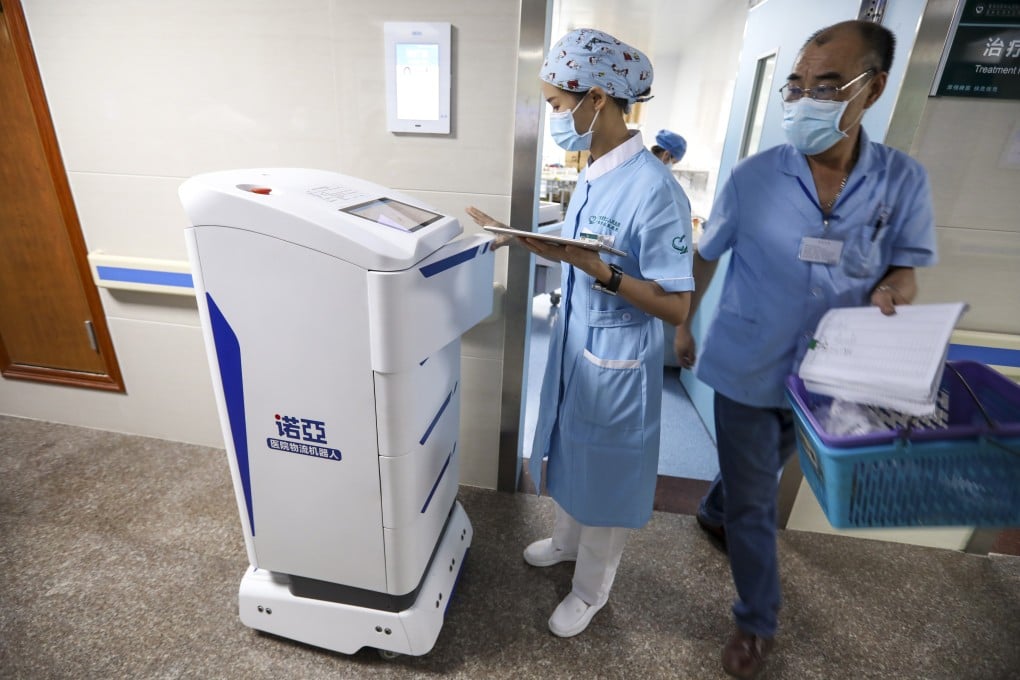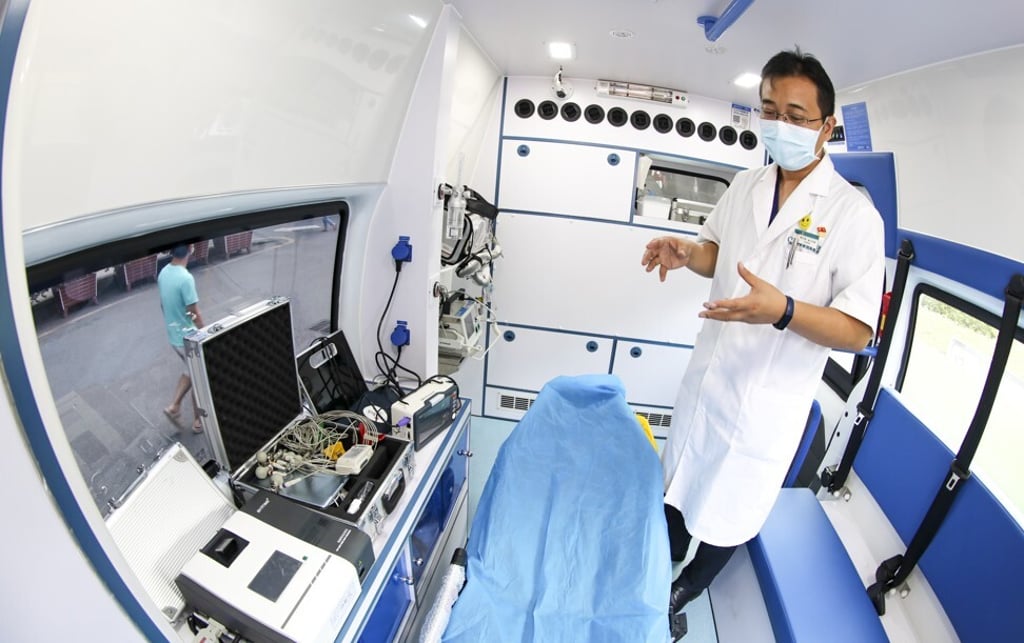Huawei hopes smart hospitals with 5G and AI can offset shrinking smartphone business
- A hospital in Guangzhou showed off this week how it is using Huawei’s 5G, AI and IoT technologies to upgrade its health care services
- Huawei is betting on a global trend towards smarter enterprise services to help ease the impact of US sanctions on its smartphone business

The tour was arranged long before the return of Meng, who landed in Shenzhen on Saturday night after nearly three years fighting an extradition legal battle in Canada. But the trip to Guangdong Second Provincial General Hospital, in the provincial capital of Guangzhou, highlighted continuing challenges for Shenzhen-based Huawei as it shifts away from smartphones to services and industrial applications after being cut off from buying or producing advanced chips.
On Sunday, the hospital showed off how Huawei technology enabled it to turn ambulances into makeshift hospitals, with smart computed tomography (CT) scanning and electrocardiogram machines that offer instant examinations and diagnoses on the road. All the data collected is also transmitted to the hospital in real time.

These sorts of hi-tech, time-saving techniques are also increasingly being used elsewhere in the world, allowing consultations to happen on the way to a hospital and operations to be conducted upon arrival. For time-sensitive emergencies, such as a stroke, this could save a patient’s life.